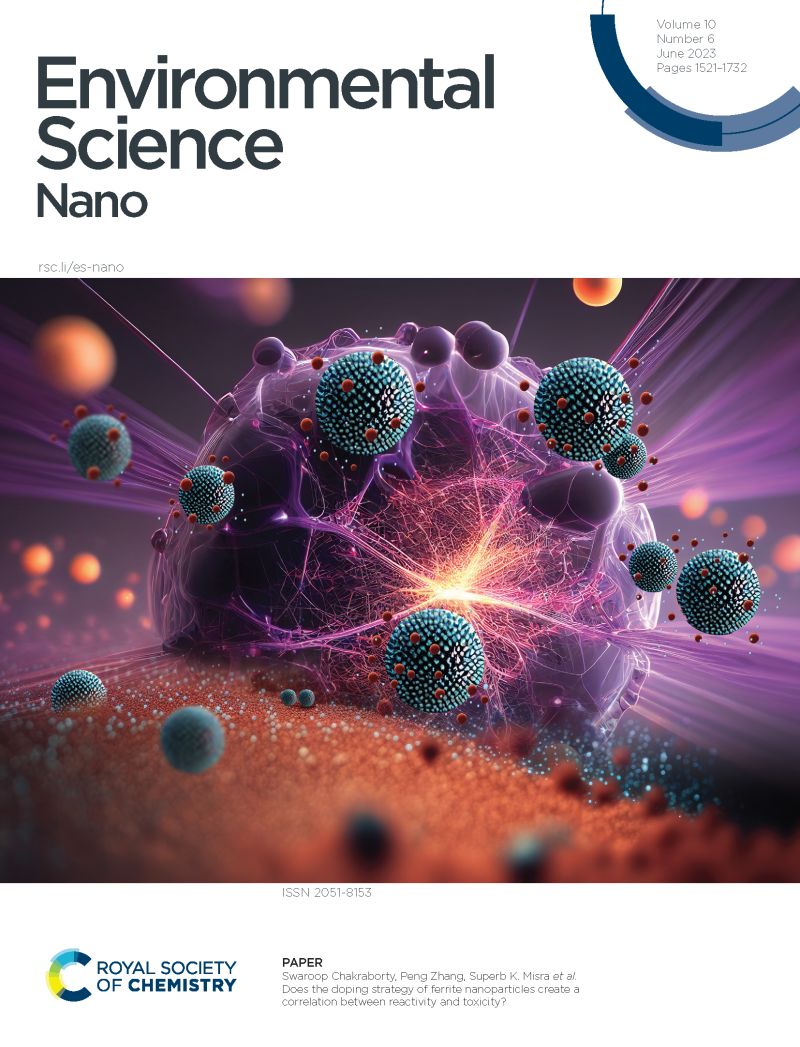Nano enabled fertilizer commercial product – unveiling the mechanisms of toxicity in non-target soil invertebrate species – a high-throughput transcriptomics approach
IF 5.8
2区 环境科学与生态学
Q1 CHEMISTRY, MULTIDISCIPLINARY
引用次数: 0
Abstract
Nanoagrochemicals have the potential to increase agricultural productivity while being more environmentally friendly, compared to conventional agrochemicals. However, and given its early days, concerns regarding their risks to human health and environment remain to be investigated. New Approach Methodologies (NAMs) are on high demand, e.g. omics, allowing to move beyond standard hazards, providing insights into the mechanism of toxicity of chemicals. The toxicity of WELGRO®, a commercial nanoagrochemical, was studied in the non-target soil invertebrate Enchytraeus crypticus (Oligochaeta) but the mechanisms are unknown. The aim of the present study was to investigate the underlying mechanisms that lead to the toxicity of WELGRO®, this based on high-throughput transcriptomic analysis (4x44K microarray), measuring the Differentially Expressed Genes (DEGs). The animals were exposed in the natural soil LUFA 2.2, for 2 and 21 days, to control (un-spiked soil) plus 100-1000 mg WELGRO®/kg, the lower dose corresponding to realistic topsoil concentrations, based on the recommended application rates. Results showed that gene transcription was clearly time dependent. The impacts after immediate exposure (2d) were highest at lowest concentration while the opposite occurred for the longer exposure time (21d), at highest concentration. The main findings showed that, regardless of the exposure period, ABC transporters were shut down, leading to accumulation of waste products and further endoplasmic reticulum (ER) stress as a possible cause of toxicity. DNA damage seems to also occur as part of the impact. Immediate exposure (2 days) affected neurotoxicity related pathways, although probably a transient/ reverted impact, as this was no longer observed after 21 days. Indications are that WELGRO® is probably up-taken (at cellular level) by clathrin-mediated endocytosis – a nano-related pathway. This study provides the first insights into the mechanisms of toxicity of a commercially available nanoagrochemical, based on a realistic exposure scenario for a non-target species. Our findings support the principle that risk assessment of nanoagrochemicals should consider the nano-specific features of those products.纳米肥料商业产品-揭示非目标土壤无脊椎动物物种的毒性机制-高通量转录组学方法
与传统农用化学品相比,纳米农用化学品具有提高农业生产力的潜力,同时更环保。然而,鉴于其早期阶段,对其对人类健康和环境的风险的关切仍有待调查。新的方法方法(NAMs)需求量很大,例如组学,允许超越标准危害,提供对化学品毒性机制的见解。WELGRO®是一种商业化的纳米农用化学品,研究了其对非目标土壤无脊椎动物隐斑Enchytraeus crypticus(寡毛纲)的毒性,但其机制尚不清楚。本研究的目的是研究导致WELGRO®毒性的潜在机制,这是基于高通量转录组学分析(4x44K微阵列),测量差异表达基因(DEGs)。动物在天然土壤LUFA 2.2中暴露2天和21天,对照(未加钉螺的土壤)加100-1000 mg WELGRO®/kg,这是根据推荐施用量与实际表土浓度相对应的较低剂量。结果表明,基因转录具有明显的时间依赖性。暴露时间越长(21d),影响越大,浓度越低;暴露时间越长(21d),影响越大。主要研究结果表明,无论暴露时间长短,ABC转运蛋白都被关闭,导致废物积累和内质网(ER)进一步应激,这可能是毒性的原因。DNA损伤似乎也是撞击的一部分。立即暴露(2天)影响神经毒性相关通路,尽管可能是短暂的/恢复的影响,因为21天后不再观察到这种影响。适应症是WELGRO®可能通过网格蛋白介导的内吞作用(一种纳米相关途径)被吸收(在细胞水平上)。这项研究基于非目标物种的现实暴露情景,首次深入了解了一种商用纳米农用化学品的毒性机制。我们的发现支持了纳米农用化学品的风险评估应该考虑这些产品的纳米特性的原则。
本文章由计算机程序翻译,如有差异,请以英文原文为准。
求助全文
约1分钟内获得全文
求助全文
来源期刊

Environmental Science: Nano
CHEMISTRY, MULTIDISCIPLINARY-ENVIRONMENTAL SCIENCES
CiteScore
12.20
自引率
5.50%
发文量
290
审稿时长
2.1 months
期刊介绍:
Environmental Science: Nano serves as a comprehensive and high-impact peer-reviewed source of information on the design and demonstration of engineered nanomaterials for environment-based applications. It also covers the interactions between engineered, natural, and incidental nanomaterials with biological and environmental systems. This scope includes, but is not limited to, the following topic areas:
Novel nanomaterial-based applications for water, air, soil, food, and energy sustainability
Nanomaterial interactions with biological systems and nanotoxicology
Environmental fate, reactivity, and transformations of nanoscale materials
Nanoscale processes in the environment
Sustainable nanotechnology including rational nanomaterial design, life cycle assessment, risk/benefit analysis
 求助内容:
求助内容: 应助结果提醒方式:
应助结果提醒方式:


